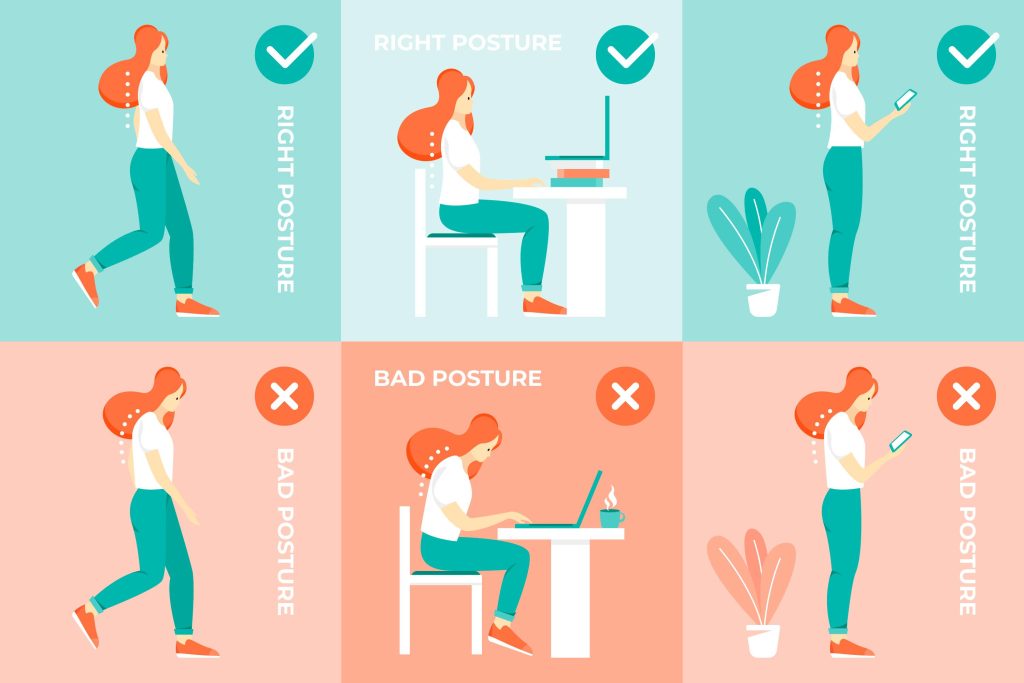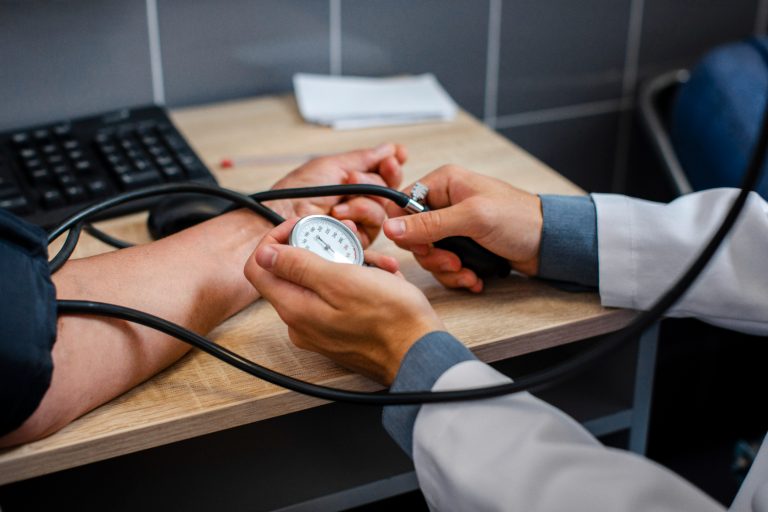Posture abnormalities include a variety of deficiencies in body position and spinal alignment that can cause both physical and even psychological problems. This condition is caused by various factors such as improper habits in daily life (e.g., sitting with poor bearing all the time), lack of physical activity, injuries, genetic predispositions, and others. Maintaining proper posture is important to keep the spine healthy and prevent back pain and other related problems.
Causes of posture disorders
The causes of posture disorders are due to various factors, ranging from improper habits in daily life to hereditary and medical conditions. Here are some of the major causes:
- Prolonged sitting with poor posture, especially at the computer or in front of the television. Improper sitting posture loads the spine and muscles unevenly.
- Lack of physical activity: leads to weakening of the muscles that support the spine.
- Carrying heavy weights: lifting and carrying weights in the wrong way or carrying weights that are too heavy overloads the back.
- Injuries and accidents: injuries to the spine.
- Hereditary factors: genetic predisposition affects the structure of the spine and muscles.
- Weak muscle tone: weakening of the muscles that support the spine.
- Growth and development: during growth and development, especially during childhood and adolescence, improper body positions and bad habits are detrimental.
- Scoliosis: lateral curvature of the spine leads to uneven weight distribution.
- Flat feet.
- Medical conditions: hip dysplasia or syndromes with muscle hypotonia.

Symptoms of poor posture
Symptoms vary depending on the specific type of disorder and its severity. However, there are a number of common signs and symptoms:
- Back pain: it can be localized in a specific area of the spine or spread across the entire back.
- Discomfort: a tensing or burning sensation in the back or neck area.
- Limitation of movement: makes it difficult to turn, bend, or make other movements.
- Fatigue: rapid fatigue with prolonged exercise or standing.
- Headaches.
- Difficulty breathing.
- A feeling of discomfort when sitting.
- Bulging of the abdomen.
- Visual changes.
- Muscle imbalances.
Correct body position
- Head is straight
- Angles of shoulder blades, shoulders symmetrically at the same level
- Equal length of lines from ear to shoulder
- The spine is straight when viewed from the back
- Normal physiologic curves of the spine
- Lumbar and cervical lordosis does not exceed the thickness of the patient’s palm
- The line between the seventh cervical vertebra and the gluteal fold is vertical without deviation.
With correct posture, body parts are symmetrically positioned in relation to the spine. In posture disorders, the muscles are weakened and the child can maintain correct position for a short period of time. There are certain differences between correct posture in preschool children, school children, and boys and girls at puberty.
Normal posture of a preschooler: symmetrical chest, without shoulder protrusion, shoulder blades slightly protrude backward, abdomen slightly forward, clearly visible lordosis, vertebral spinous processes are located along the midline.

In the normal posture of the schoolchild: symmetry of the thorax, no shoulder protrusion, shoulder blades slightly protrude backward, the abdomen slightly protrudes forward, noticeable lumbar lordosis, spinous processes are located along the midline.
Posture of adolescents: spinous processes are located along the midline of the back, the lower limbs are straightened, the upper arms are slightly lowered, the waist triangles are at the same level, the abdomen is retracted in relation to the chest, the lumbar lordosis is emphasized in girls and thoracic kyphosis in boys.
Rules for good posture
You should not be afraid of making yourself better. In fact, to accustom yourself to keep your back straight can anyone who sets himself such a goal. We have collected the basic rules for forming correct body position:
- Optimize your workspace: adjust the height of your desk and chair so that your computer screen is at eye level, preventing head tilt and neck strain.
- Optimal weight distribution when sitting: in a chair, keep both buttocks evenly on the chair, keeping your feet on the floor to reduce pressure on your lower back.
- Be aware of your emotional state: stress and tension can affect your posture. Practice relaxation techniques to reduce muscle tension and maintain healthy posture.
- Rise and stretch: get up and do a little stretching every hour (especially if you are sedentary) to reduce stress on your spine and keep your muscles flexible.
- Strengthen your corset muscles regularly: do exercises to strengthen your back, abdominal and gluteal muscles to maintain stability and correct posture.
Everyone who has posture problems should think about how not to hunch over. Correct body posture affects health and appearance. In terms of its establishment, self-control is important. It is necessary to constantly monitor the position of the head, shoulders, spine and even the abdomen.

Conclusion
Proper posture is not only an aesthetic aspect, but also an important factor in maintaining the health of the spine and the entire body. Posture disorders can lead to serious physical problems such as back pain, headaches and limitations in movement, as well as increase the risk of developing chronic diseases. Paying timely attention to your body position, correcting poor habits and regularly strengthening your muscles can help you avoid many health problems and improve your quality of life. Healthy posture requires discipline and constant monitoring, but the results in the form of improved well-being and self-confidence are worth it.





